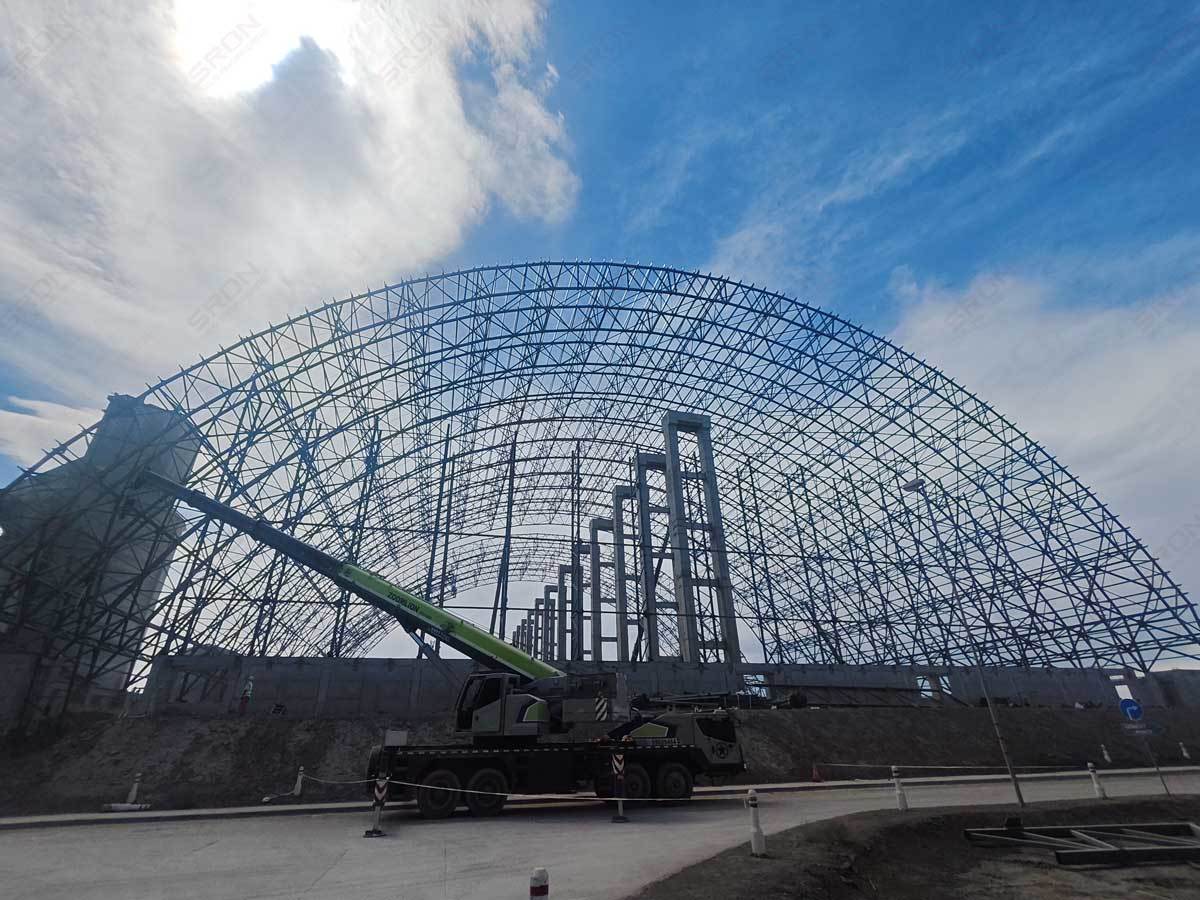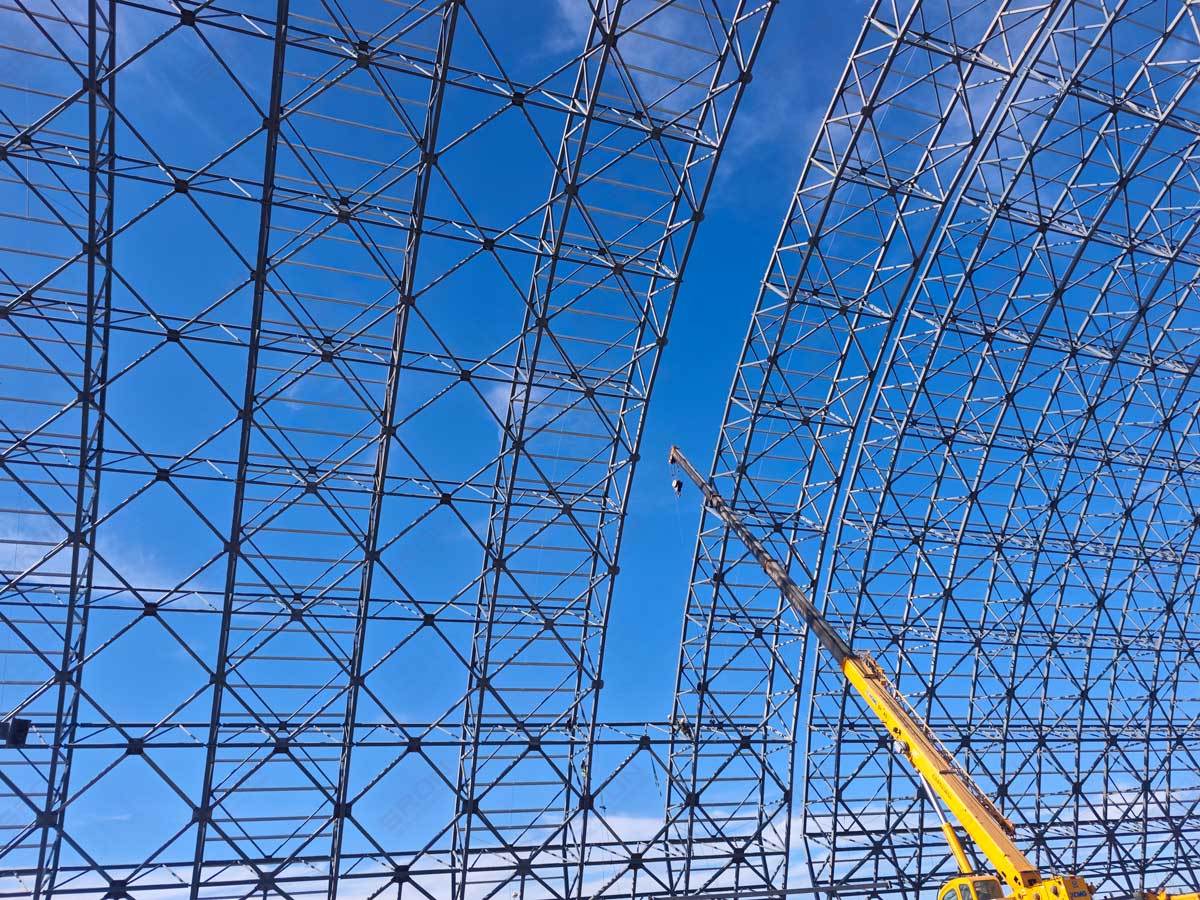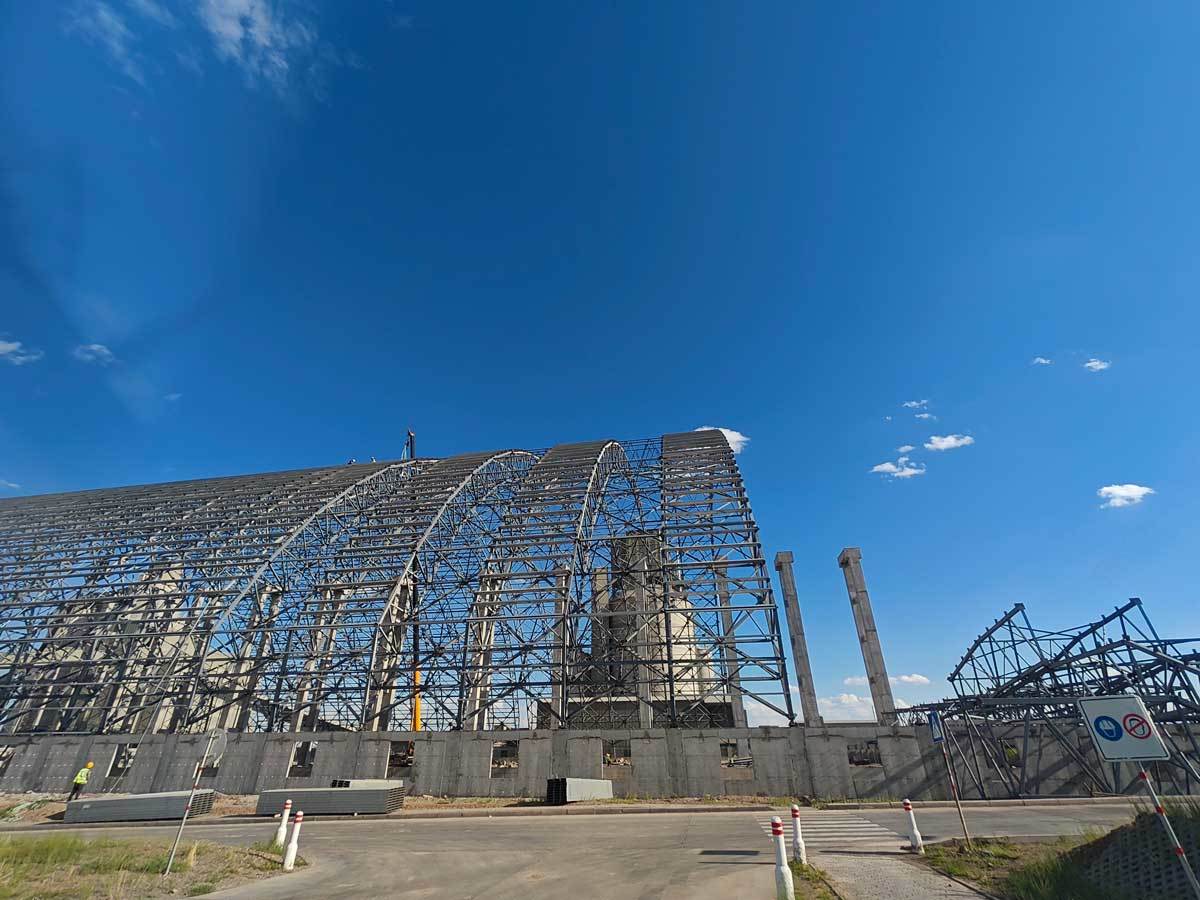Research on installation technology of large-span roof steel truss structure
Time:
Jul 25,2025
With the growing demand for large-span structures in the field of industrial construction, especially the popularity of large-span space tube truss structures, this type of structure has gradually become the mainstream choice of modern buildings due to its high space utilization and lightweight advantages. Compared with traditional grid structures, large-span space tube trusses not only have the characteristics of light weight, large span, and steel saving, but also have high engineering benefits. However, in its construction process, it still faces many technical challenges, including complex construction technology, safety hazards of high-altitude operations, and strict requirements for construction technology. This article will conduct a detailed analysis from the aspects of construction technology, technical difficulties, safety measures, etc., and propose corresponding technical solutions to improve construction efficiency and ensure construction quality and safety.

Project Overview
A cement clinker yard enclosed project adopts a lower chord supported rectangular tube truss structure. The building plane is rectangular, the steel truss span is 96 meters, the longitudinal wheelbase is 6 meters, the relative elevation is 39.5 meters, and the total length is 135 meters. The design requirements of the secondary truss are that the lower chord horizontal support is arranged evenly in each wheelbase, and the upper chord horizontal support is arranged at intervals in each wheelbase. The nodes are connected with high-strength bolts, and some nodes are supplemented by welding.

Analysis of construction technical difficulties
1. Material transportation and on-site assembly
Due to the large size of the components of this project, special attention should be paid to the weight, placement and stability of the components during transportation. The assembly site must have sufficient space and ensure that the ground is flat and solid to facilitate the smooth construction and assembly of the basic trusses. The construction site must also ensure the accuracy and stability of the assembled basic trusses to avoid affecting the construction progress and quality due to size errors or unstable supports.
2. Assembly accuracy
All components must be assembled accurately according to the design requirements. When assembling on the base truss, it is necessary to ensure that the overall size of the base truss, the matching and positioning of the components meet the design specifications. After the assembly is completed, a strict quality inspection is required to ensure the accuracy of the truss spacing and avoid errors during the hoisting process.
3. Safety of aerial work
Aerial work is one of the core operations in steel truss installation. Construction workers must undergo professional safety training, wear safety equipment that meets the standards, and strictly abide by the safety regulations for aerial work. In addition, a special aerial work guardian should be designated at the construction site to regularly check the working environment to prevent safety hazards.
4. Cross-operation problem
During the installation of the truss, other projects are often carried out simultaneously on the construction site. In order to ensure the smooth progress of various works, cross-operation must be strictly avoided. Especially during the truss hoisting process, any construction and personnel passage are prohibited in the hoisting area to prevent accidents.
5. Weather and environmental factors
The installation of large-span steel trusses is very sensitive to weather conditions. Bad weather (such as strong winds and heavy rains) will have a significant impact on the hoisting operation. When the wind speed reaches level 5 or above or it rains, the hoisting operation must be suspended. At the same time, the secondary components should be installed in time on the hoisted truss structure to ensure the stability of the overall structure.

Steel truss construction method
This project adopts "segmented assembly + unit hoisting + inter-section comprehensive method" to complete the hoisting and installation of the truss. The specific operation process is as follows:
Assemble the adjacent two sections of the main truss (including the upper chord horizontal support) into small units on the foundation truss.
Connect the small units of each section of the main truss in the north-south direction and hoist them to the support in sequence.
After each hoisting is completed, check and confirm the connection between adjacent trusses to ensure the stability of the installation.
Continue to repeat the above operations and gradually complete the installation of all main trusses.
After installing the main truss, continue to install the secondary trusses and horizontal supports between the middle main trusses.
Installation quality control
1. High-strength bolts
High-strength bolts are very important connectors in steel truss installation and must be installed strictly in accordance with the specifications. Specific measures include:
High-strength bolts should be stored in categories to avoid moisture, rust or contamination.
Ensure that the friction surface is clean during installation to avoid debris such as iron filings and floating rust that affect the connection quality.
High-strength bolts are tightened in two steps: 60-80% of the standard pre-tension is achieved during the initial tightening, and 100% is achieved during the final tightening.
An approved torque wrench must be used for the final tightening to ensure that the torque required by the design is achieved.
2. On-site welding
On-site welding mainly adopts manual arc welding and CO2 gas shielded semi-automatic welding. During the welding process, continuity should be maintained as much as possible, and welding deformation should be strictly controlled. For welding in low temperature environment, heat insulation treatment should be done well, and non-destructive inspection should be carried out after the weld cools to room temperature.
3. Measurement and monitoring
During the installation of the steel truss, the axis, elevation, verticality, deflection, etc. are measured in a timely manner to ensure that the structure meets the design requirements. Adjustment measures are taken in a timely manner for any deviation to avoid construction quality problems caused by errors.

Safety Control
Construction safety management is the key to the successful completion of the entire project. The following are the safety control measures that must be followed:
Strictly implement the systems of safety technical disclosure, safety education and training, safety inspection and hidden danger rectification.
Check the tightness of high-strength bolts before hoisting components to avoid disintegration. Operators need to wear full-body double-hook safety belts to ensure the safety of high-altitude operations.
Set up fences and warning signs at the construction site to prohibit non-related personnel from entering high-risk areas.
It is strictly forbidden for construction workers to work while fatigued or after drinking, and regularly carry out safety education and emergency drills.
The construction process of large-span space tube truss structure is demanding and technically difficult, but through reasonable construction plan, strict quality control and perfect safety measures, the construction efficiency can be effectively improved and the quality and safety of the project can be guaranteed. This article provides valuable reference and guidance for similar projects through the analysis of construction process, technical difficulties, quality control and safety measures. With the continuous development of technology, the future steel truss construction will be more efficient, safe and intelligent.



